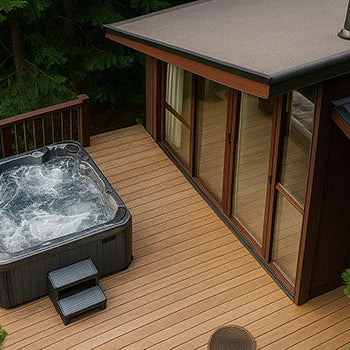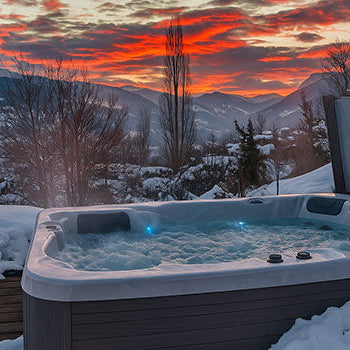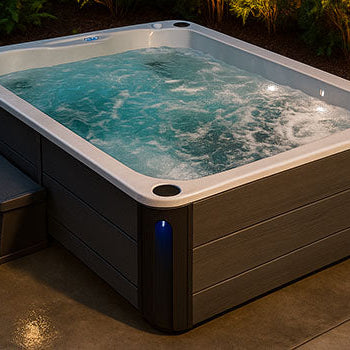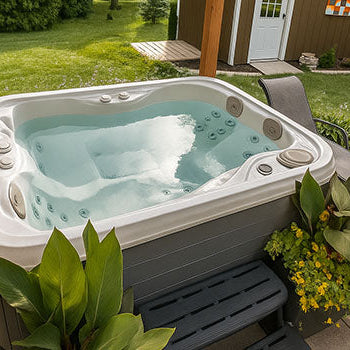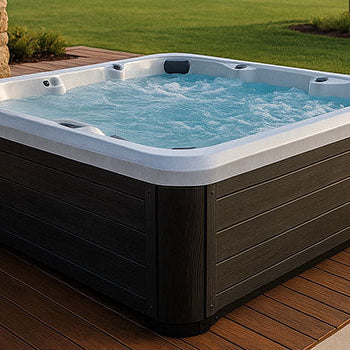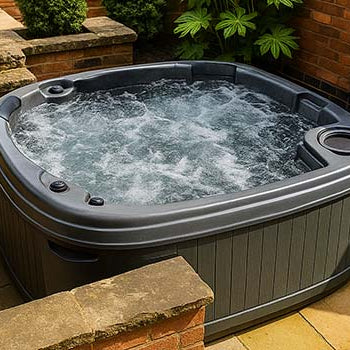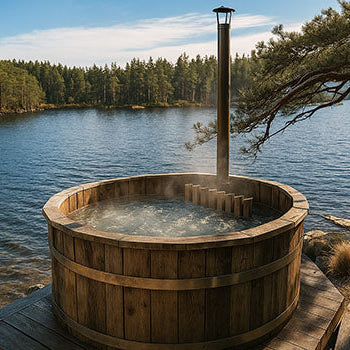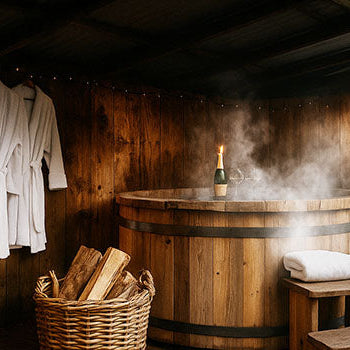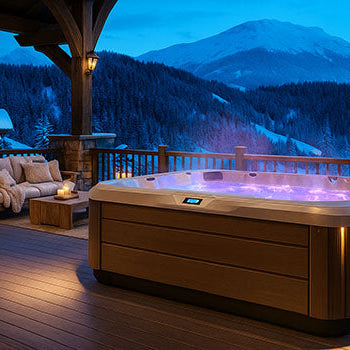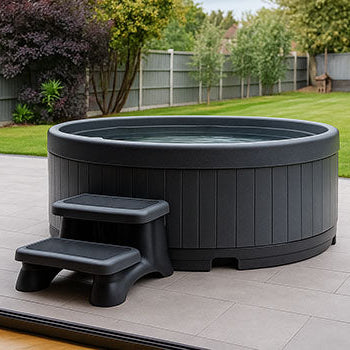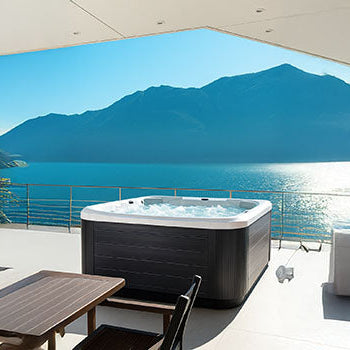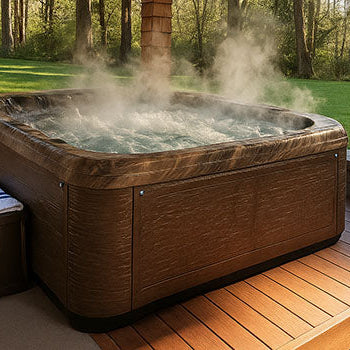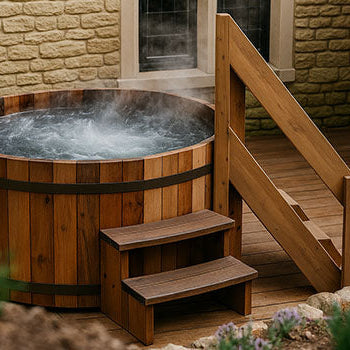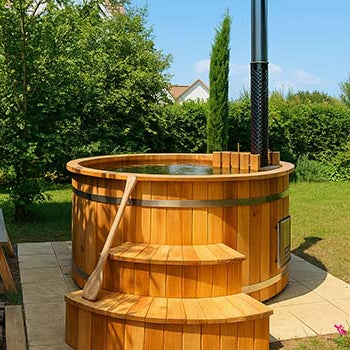Wondering what temp makes your hot tub just right? Shoot for 36–40°C, warm enough to unwind, not so hot you melt. Acrylic Hot Tubs tend to lock in that heat, while Rotomoulded ones cool quicker, great for summer dips. And Wooden Hot Tubs? Classic charm, but a bit moody with heat. Ready to find your perfect soak zone?

Hot Tub Temperatures Explained
Common Operating Range in Degrees Celsius
Most hot tubs are designed to run comfortably between 36°C and 40°C. It’s the Goldilocks range, not too hot, not too cold, just right for most bathers.
Dip below 36°C and it starts feeling lukewarm. Go above 40°C and you're risking more than just sweaty brows.
For everyday comfort and safety, this is the sweet spot.
The Maximum Safe Temperature Limit: 40°C (104°F)
Never let your hot tub creep past 40°C. That’s the official safety cap for a reason.
At this point, your body starts to overheat faster than you think. You might feel dizzy, light-headed, or even nauseous. And honestly? That’s the opposite of relaxing.
Stick to the 36–40°C range and you’ll keep things safe, soothing, and stress-free.
The Ideal Temperature for Most Healthy Adults
Finding Comfort and Relaxation (Typically 37°C - 39°C)
If you’re a healthy adult, 37–39°C is usually your best bet. It’s warm enough to relax your muscles, ease your mind, and let your body fully melt into the bubbles.
Imagine sinking into the water after a long day, at this range, it feels like a hug for your whole body.
It’s ideal for short evening soaks or weekend chill sessions with friends.
Adjusting to Your Personal Preference Safely
Everyone’s comfort zone is different. Some love it steamy, others prefer a mellow soak.
Start around 37.5°C and adjust by half a degree at a time. Take your time finding what feels best.
Listen to your body. If you’re overheating or feeling sleepy too fast, lower it a notch.

Adapting Temperatures for Different Needs and Seasons
Recommended Lower Temperatures for Children
Children are more sensitive to heat, so 35–36°C is safest. That’s warm enough for fun but not too hot for their little bodies.
Always limit soak time to 10–15 minutes and never leave them unsupervised.
If you’re sharing the tub as a family, it’s smarter to go cooler and keep it short.
Guidance for Older Adults and Those with Health Issues (Consult GP)
Seniors often love hot tubs for joint relief, but caution is key. A safe range is 36–37°C.
If they have heart issues or blood pressure concerns, it’s always best to check with a doctor first.
Stick to shorter sessions and use grab rails or supportive seats if needed.
Comfort doesn’t have to come with a risk.
Temperature Advice During Pregnancy
If you’re expecting, it’s best to keep water below 35°C and limit soaks to under 10 minutes.
Pregnancy naturally raises your body temperature, so overheating becomes more likely.
Some mums-to-be still enjoy a gentle foot soak or brief dip, but always talk to your GP first.
Safety for two comes before spa-time bliss.
Adjusting for Summer vs. Winter Use in the UK
UK winters are made for warm soaks. In colder months, 36–38°C feels amazing as the steam rises and the chill fades.
But during summer? Try 29–32°C to stay refreshed instead of flushed.
Hot tubs don’t have to be roasting to be enjoyable, seasonal tweaks save energy, too.
Cooler Temperatures for Longer Soaks or Aquatic Exercise
Doing gentle stretches or light rehab? Keep the water at 35–36°C.
This temp allows you to stay in longer without feeling drained. It’s ideal for anyone using the hot tub for recovery or stress relief over time.
You’ll still feel warm and supported, without the fatigue that comes from soaking too hot.
How Water Temperature Impacts Your Soak
Effect on Muscle Relaxation and Pain Relief
Warm water boosts circulation, calms nerves, and helps muscles let go of tension. That’s why hot tubs are a favourite for post-gym or post-work relief.
The right temperature turns every soak into a mini spa treatment.
It’s especially useful if you deal with stiffness, aches, or sleepless nights.
Relationship Between Temperature and Energy Costs
Cranking the heat higher might feel luxurious, but it adds up on your energy bill.
Every degree counts. Staying around 37–38°C strikes a great balance between comfort and cost.
And if you’re not using the tub daily, drop the temp by a few degrees between uses and let your thermal cover do the rest.
Safety Risks Associated with Incorrect Temperatures
Too hot? You could feel dizzy, overheated, or faint. Too cold? You miss out on the soothing benefits and waste energy trying to reheat it.
Hydration is also key. Even if you don’t feel like you’re sweating, your body is still losing fluids in that steamy water.
Play it smart and always keep a cool drink nearby.
Setting and Checking Your Hot Tub's Temperature
Navigating Your Control Panel Settings
Most hot tubs today, especially Acrylic or Rotomoulded ones, come with simple digital panels.
Use the arrows to adjust, press set, and give it 15–20 minutes to stabilise.
If you’re adjusting often (like between summer and winter), get familiar with those buttons so it becomes second nature.
Ensuring Your Thermostat is Accurate
Don’t just trust the screen. Pop a floating thermometer into the water every now and then to double-check.
This is especially handy with Wooden Hot Tubs, where heat can be harder to regulate.
If readings don’t match, your thermostat might need a reset or possibly a replacement.

Conclusion: Selecting the Perfect, Safe Temperature for Your Needs
There’s no one-size-fits-all answer, but 36–40°C is the ideal range for most hot tub users.
Younger adults love 37–39°C, while children, seniors, and those with health conditions should aim lower. And don’t forget to adjust for the season, cooler in summer, warmer in winter.
Acrylic Hot Tubs stay hot longer, Rotomoulded ones are great for flexible use, and Wooden Hot Tubs offer charm with a bit more effort.
Listen to your body, stay hydrated, and always keep safety first. When in doubt, start low and dial it up slowly. That way, you’ll turn your hot tub into a haven, not a hazard.
